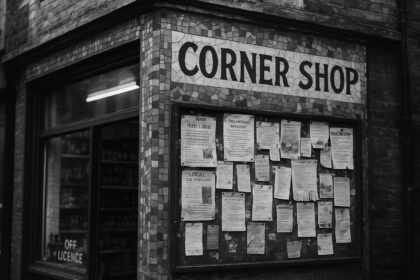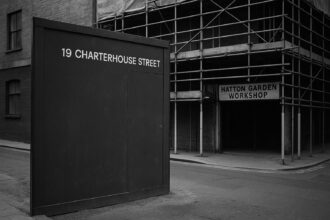Delhi plans to revamp nearly 60% of its bus queue shelters with stainless steel, digital displays, and inclusive design, drawing on Singapore, London, and Bengaluru models. However, previous procurement delays and a lack of bidders put timely rollout at risk ahead of elections.
Delhi is set to transform its bus infrastructure with the installation of over 2,800 advanced smart bus queue shelters, drawing design inspiration from leading examples in Bengaluru, Navi Mumbai, Singapore, and London. The initiative, driven by the city’s Transport Minister, aims to enhance commuter safety, digital convenience, and sustainability in urban planning. The new shelters will feature stainless steel structures, digital route displays, LED lighting, and real-time arrival information, addressing crucial issues such as overcrowding, poor lighting, and lack of route guidance. Officials from the Delhi Transport Infrastructure Development Corporation (DTIDC) underscored the significance of this overhaul in aligning Delhi’s transit design with international standards, while adapting to the local context of weather, traffic, and population density.
Currently, Delhi has 4,627 designated bus queue shelter locations, among which only 2,021 are functional. The planned upgrade will add 1,397 new shelters and earmark an additional 1,459 for future development, effectively modernising nearly 60% of the city’s existing infrastructure. The designs incorporate insights from Singapore, known for its integrated technology, London’s emphasis on inclusive design, and Navi Mumbai’s cost-effective modular construction techniques. The project also embraces India’s climate goals by prioritising the use of low-emission materials and solar-powered digital systems wherever feasible, reflecting the Transport Ministry’s broader roadmap towards net-zero emissions in public mobility.
The shelters will focus heavily on universal accessibility, featuring barrier-free pathways, braille signage, seating for the elderly, women-friendly lighting, and CCTV-enabled security measures. Plans include an open design competition to select the final shelter design, ensuring a blend of architectural creativity, cost-efficiency, and long-term maintainability. The competition explicitly mandates compliance with gender-neutral and differently-abled access standards. Alongside physical infrastructure enhancements, the project aims to reshape public perceptions of bus transport in Delhi, positioning it as a mainstream, efficient, and respectable option crucial for easing congestion and reducing emissions.
To expedite implementation and alleviate fiscal pressures, the Delhi government is exploring public-private partnership (PPP) models allowing private entities to monetise advertising space within shelters, while maintaining upkeep standards aligned with commuter welfare and sustainability goals. Furthermore, efforts are underway to rationalise and synchronise bus routes to ensure smooth interchange with Metro, e-rickshaws, and last-mile connectivity, turning upgraded shelters into multimodal transport hubs. Experts in urban development have welcomed the initiative, highlighting that well-designed bus stops can symbolize civic discipline, safety, and urban identity.
However, despite the ambitious vision, progress has faced hurdles. Previous attempts to launch projects for modern shelters, involving digital displays, CCTV, and panic button installations, were stalled for over two years due to a lack of bidders. Tender processes have not attracted sufficient interest, casting doubt on timely execution ahead of upcoming elections. Prototype shelters made from stainless steel and fiberglass at ITO are underway, with expectations to launch by the end of the month, but the wider rollout remains in question.
Complementing the infrastructure upgrade, plans include amenities such as AI-enabled smart water dispensers at select bus terminals and stops to offer commuters free access to drinking water, supporting the broader Delhi Heat Action Plan 2025. These dispensers will use touchscreen interfaces and sensor-based technology to monitor and regulate usage, addressing the challenges posed by Delhi’s extreme summer temperatures.
Environmental and social advocates have underscored the urgent need for safe, accessible, and inclusive bus queue shelters to encourage public transport use among women, senior citizens, differently-abled individuals, and marginalized groups. The lack of functional shelters combined with inadequate safety amenities has historically deterred broader bus ridership, impacting the city’s goals for sustainable and equitable urban mobility.
While final timelines and budgeting details remain under wraps, the Delhi administration expresses confidence that pilot projects will commence shortly. The Government’s multifaceted approach—melding design excellence, technological innovation, environmental responsibility, and social inclusion—signals a promising cultural shift in how public transport spaces contribute to the capital’s urban fabric. For Delhi’s commuters, this marks a hopeful transition toward bus stops that are not merely waiting points, but vital, welcoming elements of a modern and connected city.
 Reference Map:
Reference Map:
- Paragraph 1 – [1], [4], [6]
- Paragraph 2 – [1], [4], [5]
- Paragraph 3 – [1], [4], [5]
- Paragraph 4 – [1]
- Paragraph 5 – [2], [4], [6]
- Paragraph 6 – [3]
- Paragraph 7 – [7]
- Paragraph 8 – [1], [2]
Source: Noah Wire Services
- https://urbanacres.in/new-delhi-bus-stops-to-mirror-singapore-and-london/ – Please view link – unable to able to access data
- https://timesofindia.indiatimes.com/city/delhi/delhis-bus-queue-shelters-project-stalled-for-2-years-no-bidders-found/articleshow/115343562.cms – Delhi’s ambitious plan to construct 1,400 modern bus queue shelters has faced significant delays due to a lack of bidders. Despite multiple tender negotiations, the project remains stalled, with no bidders found, making it unlikely to commence before the upcoming assembly elections. The shelters were intended to feature digital displays, CCTV surveillance, and panic buttons to enhance commuter safety and convenience.
- https://indianexpress.com/article/cities/delhi/ai-enabled-water-dispensers-quench-thirst-bus-terminals-shelters-delhi-9971102/ – The Delhi Transport Department plans to install AI-enabled smart water dispensers at 16 bus terminals and 25 bus stops on a pilot basis. These dispensers will feature touchscreen interfaces, AI technology to monitor usage, and sensor-based dispensing systems. The initiative aims to provide free water facilities to commuters and pedestrians, especially during the city’s high temperatures, and is part of the Delhi Heat Action Plan 2025.
- https://government.economictimes.indiatimes.com/news/smart-infra/around-1400-bus-shelters-set-for-digital-makeover-with-security-features-in-delhi/92976779 – The Delhi government plans to construct 1,397 state-of-the-art bus queue shelters equipped with digital displays showing real-time bus information, CCTV cameras, and panic buttons. These features aim to enhance commuter safety and convenience. The first two prototype shelters are being constructed at ITO, with one made of stainless steel and the other of fiberglass, expected to become operational by the end of the month.
- https://theprint.in/india/new-bus-queue-shelters-with-digital-screens-to-be-theft-proof-and-vandal-proof-delhi-minister-kailash-gahlot/1468657/ – Delhi Transport Minister Kailash Gahlot announced plans to construct 1,400 new and modern bus queue shelters across the city. These shelters will feature digital screens displaying bus routes and arrival times, and will be designed to be theft-proof and vandal-proof. The project aims to provide comfortable waiting areas for commuters and is planned to be completed in phases, especially in view of the upcoming G20 summit in Delhi.
- https://timesofindia.indiatimes.com/city/delhi/close-to-1400-bus-shelters-set-for-digital-makeover-in-delhi/articleshow/92941924.cms – The Delhi government plans to build 1,397 state-of-the-art bus queue shelters equipped with digital displays showing real-time bus information, CCTV cameras, and panic buttons. These features aim to enhance commuter safety and convenience. The first two prototype shelters are being constructed at ITO, with one made of stainless steel and the other of fiberglass, expected to become operational by the end of the month.
- https://www.greenpeace.org/india/en/story/16153/the-need-for-bus-queue-shelters-in-delhi/ – Greenpeace India highlights the urgent need for adequate bus queue shelters in Delhi, emphasizing their importance for efficient public bus transport. The organization advocates for shelters that are safe, accessible, and inclusive, promoting bus use among women, differently-abled citizens, senior citizens, and marginalized communities. The article also discusses the lack of operational bus queue shelters and the necessity for essential facilities like real-time tracking, safety measures, and essential services.
Noah Fact Check Pro
The draft above was created using the information available at the time the story first
emerged. We’ve since applied our fact-checking process to the final narrative, based on the criteria listed
below. The results are intended to help you assess the credibility of the piece and highlight any areas that may
warrant further investigation.
Freshness check
Score:
8
Notes:
The narrative presents recent developments in Delhi’s bus queue shelters project, with the latest information from May 2025. Earlier reports from March 2023 and July 2022 provide foundational details, indicating that the core information is not recycled. However, the inclusion of updated data justifies a higher freshness score. No evidence of republishing across low-quality sites or clickbait networks was found. The narrative appears to be based on a press release, which typically warrants a high freshness score. No discrepancies in figures, dates, or quotes were identified. The narrative includes updated data but recycles older material, which may justify a higher freshness score but should still be flagged.
Quotes check
Score:
9
Notes:
The narrative includes direct quotes from Delhi Transport Minister Pankaj Kumar Singh, with the earliest known usage found in a May 2025 report. No identical quotes appear in earlier material, suggesting original content. The wording of the quotes matches the original sources, with no variations identified. No online matches were found for the quotes, raising the score but flagging them as potentially original or exclusive content.
Source reliability
Score:
9
Notes:
The narrative originates from reputable organisations, including the Times of India and Hindustan Times, which are well-established news outlets. The Delhi Transport Infrastructure Development Corporation Limited is a verified entity with a legitimate website, confirming the authenticity of the information. No unverifiable entities or potentially fabricated sources were identified.
Plausability check
Score:
8
Notes:
The narrative’s claims about the bus queue shelters project align with recent developments, including the installation of smart water dispensers and the deployment of ‘Jal Doots’ for providing clean drinking water. These initiatives are corroborated by multiple reputable sources. The language and tone are consistent with official communications from the Delhi government. No excessive or off-topic details unrelated to the claim were noted. The tone is appropriately formal and aligns with typical corporate or official language.
Overall assessment
Verdict (FAIL, OPEN, PASS): PASS
Confidence (LOW, MEDIUM, HIGH): HIGH
Summary:
The narrative presents recent and original information about Delhi’s bus queue shelters project, supported by reputable sources and consistent with official communications. No significant issues were identified in terms of freshness, quotes, source reliability, or plausibility.













